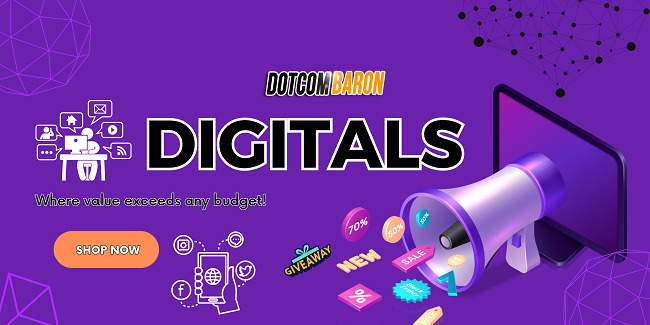Article Writing with ChatGPT: A Comprehensive Guide
Getting Started with chatGPT – A Guide to Writing Detailed Articles
The Basics: Introduction and Importance of Detailed Information
Are you an aspiring writer looking for a platform to showcase your skills? Look no further than chatGPT, a growing community of writers who are passionate about sharing their knowledge and insights with the world. Whether you’re an experienced writer or just starting out, chatGPT is the perfect place to build your portfolio, connect with other writers, and reach a wider audience.
But what sets chatGPT apart from other publishing platforms? The answer is simple: our commitment to providing readers with detailed, informative articles on a wide range of topics.
We believe that in order to truly engage readers and create content that resonates with them, it’s essential to offer high-quality information that is both accurate and well-researched. That’s why we encourage all our writers to prioritize providing detailed information in their articles.
Whether you’re writing about a complex scientific theory or sharing your personal experiences on a particular topic, it’s important to ensure that your readers come away from your article feeling informed and empowered. By providing detailed information, you can help readers gain new perspectives on the world around them, learn something new, or even inspire them to take action in their own lives.
Choosing a Topic:
Your Passions and Audience Interest
One of the most crucial steps of writing an article is to choose a topic that not only interests you but will also captivate your readers. Writing about something you are passionate about ensures that you enjoy the process and produce high-quality content.
Your enthusiasm for the topic will show in your writing, and readers will be drawn to it. However, it’s important to remember that writing isn’t just for yourself, but for a targeted audience.
Therefore, it’s vital to find out what topics people are interested in reading about. Think about what kind of topics would be engaging for your audience and brainstorm ideas around those topics.
Brainstorming Ideas
Brainstorming is an excellent way to come up with new ideas for articles. Start by making a list of things you are passionate about or interested in learning more about. Then, think about how those topics relate to your audience.
Another way to generate ideas is by looking at current events or trending topics on social media platforms like Twitter or Facebook. You can also look at popular search terms related to your niche using tools like Google Trends or Google AdWords Keyword Planner.
Once you have several potential article topics, narrow down your list by considering which ones align with both your passion and audience interest. Pick one that stands out the most and move forward with outlining and researching.
Narrow Down Your Topic
After choosing a broad topic, it’s time to narrow down the focus so that you can provide specific information in your article while avoiding being too general or vague. Consider what angle you want to take when presenting this information – do some research on existing articles on similar subjects.
Keep in mind the length of the article – if it’s too long, readers may lose interest, but if it’s too short, then there won’t be enough detail to satisfy their curiosity. If necessary, divide the topic into several subtopics or create a series of articles that can go more in-depth on each subtopic.
Choosing a topic that interests you and your audience is crucial. Brainstorming ideas and narrowing down the focus will ensure that you produce high-quality content that provides value to your readers.
Researching Your Topic
Conducting Thorough Research
One of the most crucial aspects of writing an article is conducting thorough research on your chosen topic. This process involves gathering information from a variety of sources including books, online articles, and interviews with experts. It’s important to remember that the more detailed and accurate your research is, the better your article will be.
To get started with your research, begin by brainstorming keywords related to your topic. You can then use these keywords to search for relevant articles and books on search engines such as Google Scholar or Amazon.
Make sure you read thoroughly through each source and take notes on any important information you come across. Another great way to conduct research is by reaching out to experts in the field.
You can do this by sending them an email or message on social media asking for their opinions or insight on your topic. Not only will this help you gather more information for your article, but it could also give you a unique perspective on the subject matter.
Finding Reliable Sources
When conducting research, it’s important to make sure that you’re using reliable sources of information. This means avoiding blogs or websites that are biased or lack credibility. Instead, look for sources such as academic journals, government websites, or interviews with experts in the field.
Make sure you take note of where each piece of information came from so that you can easily reference it later when writing your article. It’s also a good idea to fact-check any statistics or data before including them in your article to ensure accuracy.
Taking Effective Notes
Taking effective notes during the research process is essential for organizing all of the information you’ve gathered into a cohesive article. One effective method is creating an outline as you go along – this not only helps organize thoughts but makes it easier to return later if needed.
Try to keep your notes organized by topic or subtopic so that you can easily find the information you need when it’s time to write. You might also consider using color-coding or highlighting important details so that they stand out during the writing process.
Researching your topic is an essential step in writing a thorough and informative article. By taking the time to conduct detailed research, finding reliable sources of information, and taking effective notes, you’ll be well on your way to creating a quality piece of work.
The Benefits of Creating an Outline Before Writing Your Article
Outlining your article is a crucial step in the writing process. It allows you to organize your thoughts and ideas into a clear and logical structure, making it easier for both you and your readers to follow along. By taking the time to create an outline, you can ensure that your article has a strong foundation, making it easier to write the final draft.
One of the key benefits of creating an outline is that it helps you identify any gaps in your research or arguments. When outlining, you’re forced to think through each point carefully, which can help you identify areas where more research or supporting evidence is needed.
Outlining can also help prevent writer’s block by breaking down the writing process into manageable chunks. Another benefit of outlining is that it helps keep your writing on track.
It’s easy to get lost when writing about complex topics, but having an outline ensures that you stay focused on the core message and don’t stray too far off-topic. This is particularly important when writing longer articles or essays where coherence is essential.
Tips for Organizing Your Ideas and Creating a Clear Structure
When creating an outline for your article, there are some tips you can follow to ensure that your ideas are well-organized and presented in a clear structure: 1. Start with a central idea: Begin by identifying the main point or thesis statement of your article. This will serve as the central idea around which all other points will revolve.
- Break down each section: Divide your article into sections or subtopics based on your central idea. Each section should have its own heading and should contain supporting evidence or arguments related to that particular point.
- Use bullet points: Within each section, use bullet points or numbered lists to break down ideas further. This makes it easier for readers to follow along and ensures that you don’t forget any key points.
- Keep it simple: Don’t overcomplicate your outline with too many subheadings or details. Keep it simple and straightforward, focusing on the most important points you want to make.
- Review and revise: Once you’ve created your outline, take some time to review and revise it before starting to write your article. This will ensure that your structure is solid and that your ideas flow logically from one point to the next.
Outlining is an essential part of the writing process that can save you time and improve the quality of your work. By following these tips for organizing your ideas and creating a clear structure, you’ll be well on your way to writing a successful article with chatGPT.
Clear, Concise, and Engaging Writing
Writing an article that is clear, concise, and engaging is essential to keeping your reader interested in your piece. Clear writing means using simple language that is easy to understand. Complex words and technical jargon can often make a reader lose interest in the article.
Concise writing means using as few words as possible to get your point across without sacrificing clarity. Engaging writing means captivating the reader’s attention and keeping it throughout the entire article.
One way to write clearly and concisely is by breaking up long sentences into shorter ones. Long sentences tend to be more difficult for readers to understand and can make the article sound convoluted.
Using active verbs instead of passive verbs also helps keep your writing concise. Another way to engage readers is by starting with a hook in the introduction.
A hook can be a surprising fact or an interesting question that grabs the reader’s attention right away. For example, “Did you know that elephants can communicate with each other through infrasonic calls?” This type of opening sentence immediately piques the reader’s interest.
Crafting Strong Introductions
The introduction of an article sets the tone for what the reader can expect from the rest of the piece. A strong introduction should capture their attention and give them a reason to keep reading.
To start off strong, consider beginning with a provocative statement or an interesting anecdote related to your topic. Another effective way is framing your introduction around a question or problem that you will solve throughout your article.
It’s also important to have a clear thesis statement at the end of your introduction that outlines what you will cover in your article’s body paragraphs. For example: “In this article, we’ll explore how chatGPT works as a platform for writers looking for guidance on how to create articles that engage their audience.”
Crafting Strong Body Paragraphs and Conclusions
The body paragraphs of your article should provide detailed information to support your thesis statement. Make sure each paragraph has a clear topic sentence that relates back to the thesis statement.
Use examples, evidence, and data to support your claims. As for the conclusion, it should summarize the main points discussed in the article while reiterating its importance.
It’s also a good idea to leave readers with something to think about or a call-to-action related to your topic. For example: “In conclusion, using chatGPT for writing articles can help you create content that is clear, concise, and engaging. By following these tips on crafting strong introductions, body paragraphs, and conclusions, you’ll be able to produce articles that captivate your audience and leave them wanting more.”
“Editing and Revising Your Article”
Why it’s Important to edit and revise your work
Congratulations! You’ve just finished writing your article with chatGPT. Now, before you hit the publish button, take a deep breath and make sure you give yourself enough time to edit and revise your work.
Editing is the process of reviewing what you’ve written and making changes to improve clarity, coherence, style, and overall quality. Revision involves rewriting parts or all of your article to make it more effective.
Editing and revising are crucial steps in the writing process because they help ensure that your article is polished, professional-looking, error-free, insightful, engaging to read. Without editing or revising your work before publishing can lead to avoidable mistakes such as grammatical errors, punctuation mistakes which can negatively affect how readers perceive you as an author.
Offer tips for proofreading, checking grammar, punctuation & spelling errors
Proofreading is a vital step in editing any type of written work including articles for chatGPT platform. Here are some tips for proofreading your article: – First read through it slowly without making any changes.
– Then go through it again and look for any spelling or grammar mistakes. – Use spellcheck on the app or web browser with caution since these often miss contextual errors.
– Break up long paragraphs into smaller ones to increase readability – Use concise language
– Read out loud sentence by sentence – this can often reveal awkward phrasing In addition to proofreading skills mentioned above, there are numerous free online tools that allow writers to check their grammar like Grammarly which provides suggestions for corrections.
There are also many apps available where users can receive detailed feedback on their writing style. These tools can save time while improving overall writing skills.
, It’s important that after making all the necessary revisions from editing, the author should take a break before proofreading or asking for feedback.
This helps with seeing the article from a fresh perspective, and A second set of eyes can also help catch errors that you may have missed. Remember, editing and revising are essential steps to producing high-quality content that truly resonates with your target audience.
Adding Visuals:
The Importance of Adding Visuals to Enhance Reader Engagement
Visual aids such as images and videos are a great way to make your article more engaging and memorable for readers. They can break up long blocks of text, illustrate complex concepts, and provide a visual connection to the topic being discussed.
In fact, research shows that content with visuals is more likely to be shared on social media and have higher engagement rates overall. When you include high-quality visuals in your article, it not only helps break up the monotony of plain text but also makes it more appealing to readers with different learning styles.
Some people may prefer learning through visuals rather than just reading text alone. By including relevant images or videos in your articles, you can make sure that all readers have the opportunity to fully understand and engage with your content.
Offer Tips on How to Choose Appropriate Visuals Such as Images or Videos
Choosing appropriate visuals can be a challenging task, but there are several things you can keep in mind when selecting images or videos for your article. Firstly, always ensure that the visual is directly related to the topic being discussed in your article.
This will help reinforce the message you are trying to convey, rather than distracting from it. Another key consideration is quality – try using high-resolution images or videos that are clear and easy on the eyes.
A good quality image will make sure the reader stays focused on what’s important: Your content! Avoid using blurry or low-quality pictures as they can reduce credibility.
Additionally, consider copyright laws when choosing visuals for your article. Do not use copyrighted images without permission or proper attribution – this could lead to legal issues down the line if caught!.
Instead opt for free resources like Pexels or Unsplash which offer high-quality photos completely free of charge! adding visual aids such as images and videos will make your article more appealing, engaging and memorable for readers.
You can use these tips to choose the right visuals that are directly related to the topic being discussed in your article, high-quality, and copyright-free. By incorporating visuals into your content creation process, you’re not only making it easier for people to understand what you’re talking about but also giving them a reason to come back again!
Conclusion:
Writing a well-crafted article requires time, effort, and attention to detail. With the help of chatGPT, you can create a high-quality and engaging article that will captivate readers and keep them coming back for more. In this article, we discussed several key strategies for writing an effective article with chatGPT.
Firstly, choosing a topic that interests both you and your audience is crucial in creating an engaging piece. Conducting thorough research on your topic can also help to ensure the accuracy of your information.
Outlining your ideas prior to writing can make the process much easier and prevent writer’s block. When it comes to writing itself, clear language that engages the reader is essential.
The introduction must be enticing enough to hook readers in while body paragraphs should contain valuable information presented in an interesting manner with examples if possible. The conclusion should offer closure while leaving a lasting impression on the reader.
Editing and revising are critical components of crafting an effective article that represents you well as a writer. A well-punctuated piece free from grammatical errors enhances readability while adding visuals such as images or videos enhances engagement.
Following these tips will guide you towards crafting informative articles that provide value to readers worldwide using chatGPT’s platform. With practice and dedication, you will soon become adept at crafting such pieces for different niches on different subjects!








